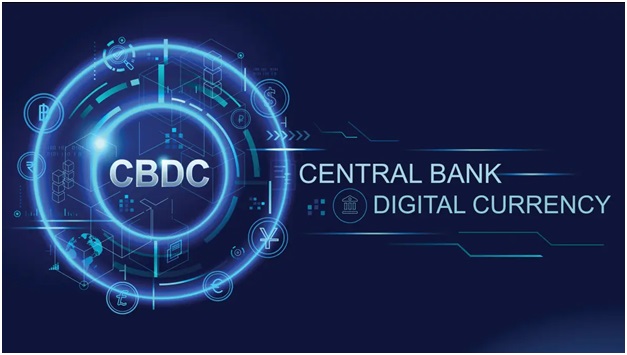Maternity Leave as a Constitutional and Reproductive Right

- 25 May 2025
Background:
In a landmark ruling in K. Umadevi v. Government of Tamil Nadu (May 2025), the Supreme Court (SC) affirmed that maternity leave is not merely a welfare measure but a constitutional and reproductive right of women. Setting aside the Madras High Court’s judgment, the apex court extended maternity benefits to a government school teacher for her third child, rejecting the Tamil Nadu government's policy that restricts such benefits to only the first two children.
Background of the Case:
The petitioner, a teacher employed in a Tamil Nadu government school, was denied maternity leave for her third biological child, citing Fundamental Rule 101(a) which limits benefits to women with fewer than two surviving children. Notably, the child in question was from her second marriage, while the earlier two children were in the custody of her former husband and born before her employment. The single bench of the High Court had ruled in her favour, finding the state rule inconsistent with the Maternity Benefit Act, 1961 and invalid under Article 254 (repugnancy with central law). However, a division bench reversed this decision, prompting an appeal to the SC.
Key Observations by the Supreme Court:
- Maternity leave is integral to a woman’s reproductive autonomy and thus protected under Article 21 of the Constitution, which ensures personal liberty.
- It is also aligned with Directive Principles of State Policy (Article 42) that mandate the state to ensure humane work conditions and maternity relief.
- The SC emphasized that reproductive rights are recognized under international human rights law, including the rights to health, privacy, dignity, equality, and non-discrimination (as per the Universal Declaration of Human Rights).
- The Court clarified that population control, though a valid public policy goal, cannot override the constitutional guarantee of reproductive choice and health.
Reaffirming the Maternity Benefit Act, 1961 (Amended 2017):
- The Act applies to workplaces with 10 or more employees, including both public and private sectors.
- Provides 26 weeks of paid maternity leave for women with fewer than two surviving children, and 12 weeks for the third or subsequent child.
- Also covers adoptive and commissioning mothers with 12 weeks of leave.
- Ensures job security, access to crèche facilities in establishments with 50+ employees, and promotes work-from-home options during or after pregnancy.
Significance of the Judgment:
- The verdict ensures gender equity in the workforce by reinforcing women’s right to combine motherhood with professional aspirations.
- It highlights the need to harmonize state policies with central welfare legislation and constitutional mandates.
- It reflects the Court's broader jurisprudence, such as in Suchita Srivastava v. Chandigarh Administration, which had affirmed a woman’s reproductive choices as part of her autonomy.
Implications for Policy and Governance:
This judgment strengthens women’s workforce participation by addressing a key dropout point—childbirth. It serves as a precedent for inclusive, rights-based policy design and calls for reviewing restrictive service rules across states. It aligns with India's commitments under international human rights frameworks and the Sustainable Development Goals (SDG 5: Gender Equality).
In conclusion, the Supreme Court’s verdict elevates maternity leave to a constitutionally protected right, advancing both social justice and women’s empowerment in India’s democratic framework.
Reforming Banking Regulations for a $7 Trillion Indian Economy

- 14 Feb 2025
In News:
India’s GDP is projected to nearly double from $3.7 trillion in 2023–24 to $7 trillion by 2030–31, driven by strong digital infrastructure, financial inclusion, and supportive fiscal policies. However, to sustain this growth, robust capital formation and increased credit flow are essential.
The current banking regulatory architecture—comprising Statutory Liquidity Ratio (SLR), Cash Reserve Ratio (CRR), Liquidity Coverage Ratio (LCR), andPriority Sector Lending (PSL)—while ensuring stability, also constrains banks’ lending capacity, particularly for the private sector and MSMEs.
Investment Needs and Private Sector Slowdown
India needs $2.5 trillion in investments, demanding an investment-to-GDP ratio of 34%. Public investment alone is insufficient due to fiscal deficit constraints, necessitating greater reliance on private capital and household savings. However, the investment-to-operating cash flow ratio for the private sector has declined from 114% in 2008–09 to 56% in 2023–24, reflecting weakening investment appetite.
Challenges in Financial Intermediation
Banks’ share in household financial savings has declined from 50% to 40%, as savers turn to higher-yield options like mutual funds. Simultaneously, banks face high regulatory pre-emptions, holding nearly 30% of deposits as non-lendable reserves, including:
- SLR (~26%), exceeding the mandated 18% due to LCR constraints,
- CRR (4%), which earns no interest.
These requirements reduce lendable resources, raise borrowing costs, and constrain credit growth, especially for MSMEs. Further, upcoming LCR norms for digital deposits could require banks to allocate 2–2.5% more to liquid assets, limiting credit availability further.
Need to Rationalize Regulations
Globally, LCR is the standard liquidity norm, but India uniquely mandates both SLR and LCR, leading to excessive capital retention in low-yield instruments. Additionally, India’s exclusion of CRR from High-Quality Liquid Assets (HQLA) reduces bank profitability. While Basel III emphasizes flexible, institution-specific liquidity planning, the RBI’s rigid mandates hinder optimal resource deployment.
Liquidity Access and MSME Credit Gap
Large corporates can access capital via equity and bond markets, but MSMEs remain dependent on bank credit, facing persistent shortages. PSL norms, which account for over 60% of bank lending, can distort credit risk pricing and misallocate capital. A revision is needed to align PSL with India’s changing economic structure.
Credit Growth and Exchange Rate Management
India’s credit growth lags nominal GDP growth, signaling underinvestment and risks to financial stability. Revisiting the credit-to-deposit (CD) ratio can help banks raise capital more efficiently. Meanwhile, defending the rupee against a strong dollar has drained liquidity without addressing currency overvaluation, which continues to hurt export competitiveness.
Way Forward
- Rationalize SLR and LCR mandates to unlock liquidity and lower interest rates.
- Revise PSL norms to reflect new growth priorities.
- Stimulate private investment through policy stability and ease of doing business.
- Deepen bond markets to diversify capital sources.
- Align digital banking fees with global norms for viability.
Conclusion
India stands at a critical juncture in its economic transformation. Reforms in banking regulation, better financial intermediation, and improved credit access are pivotal to achieving the vision of a $7 trillion economy. A forward-looking regulatory framework will empower banks to act as true engines of inclusive and sustained growth.
SBI allows interoperability of UPI and Central Bank Digital Currency (CBDC) (The Economic Times)

- 06 Sep 2023
Why in the News?
The State Bank of India has announced the implementation of UPI interoperability in its Digital Rupee (eRupee) also called Central Bank Digital Currency (CBDC).
Context:
- Banks are making it possible for Unified Payments Interface's (UPI) Quick Response (QR) codes to work seamlessly with their central bank digital currency (CBDC) or e? applications.
- Interoperability means that the payment system can function smoothly alongside other payment systems.
- It enables system providers and participants from different systems to conduct, process, and settle payment transactions across systems without the need for involvement in multiple systems.
- As a result of this interoperability, users of the retail digital rupee will be able to make transactions by scanning any UPI QR code at a merchant's establishment.
- Additionally, merchants can now accept digital rupee payments through their existing UPI QR codes.
- This integration of UPI and CBDC is part of the Reserve Bank of India's (RBI) ongoing pilot project to promote the adoption of the retail digital rupee (e?-R).
What does UPI QR code-CBDC interoperability mean?
- Interoperability between UPI and the digital rupee ensures that all UPI QR codes can now be used seamlessly with CBDC apps.
- Initially, during the launch of the pilot for the retail digital rupee, e?-R users were required to scan a specific QR code for their transactions.
- However, thanks to the interoperability of these systems, payments can now be initiated using a single QR code.
- In this setup, the e? is stored in a digital wallet, which is connected to the customer's existing savings bank account, while UPI is directly linked to the customer's account for payments.
How will interoperability contribute to increased CBDC adoption?
- Interoperability between CBDC and UPI is poised to drive the adoption of the digital rupee, especially considering UPI's widespread use.
- Currently, UPI is a highly popular payment method, with more than 70 mobile apps and over 50 million merchants accepting UPI payments.
- In July, the RBI Deputy Governor reported that there were 1.3 million customers and 0.3 million merchants using the retail digital rupee.
- However, the daily e?-R transactions in July ranged from 5,000 to 10,000, indicating room for growth.
- The seamless integration of CBDC with UPI is expected to boost the acceptance and utilization of digital currencies in everyday transactions.
How will this benefit customers and merchants?
- The UPI and CBDC interoperability will streamline transactions for both customers and merchants, eliminating the need to switch between multiple digital platforms.
- Digital rupee users can now effortlessly make payments for everyday essentials like groceries and medications by scanning any UPI QR code at any merchant's store.
- Merchants will no longer need a separate QR code to accept digital rupee payments; they can seamlessly receive CBDC payments through their existing QR code setup.
- If the merchant has a CBDC account, the payment will be settled in their CBDC wallet. For merchants without a CBDC account, there will be an option to process payments using UPI.
What is a QR code?
- A QR code, short for Quick Response code, is a pattern of black squares arranged in a square grid against a white background, designed to be read by imaging devices like cameras.
- These codes contain information related to the item they are associated with. QR codes serve as a convenient and contactless method for various purposes, including enabling businesses to receive payments directly into their bank accounts from customers.
What is Central Bank Digital Currency (CBDC)?
- CBDC stands for Central Bank Digital Currency, which is a digital form of legal tender issued by a central bank.
- In the case of India, the Reserve Bank of India has introduced the digital rupee, known as e-Rupee.
- This digital currency holds the same value as traditional fiat currency and can be exchanged on a one-to-one basis.
- The primary distinction is its digital format.
- The launch of the digital rupee is divided into two main categories: general purpose (retail) and wholesale.
- This categorization is based on how the digital rupee is used and its accessibility levels.
- Starting from November 1, 2022, the RBI initiated its first pilot project for the use of the digital rupee in the wholesale market, specifically for secondary trade in government securities (G-secs).
- Wholesale CBDC has the potential to enhance the efficiency and security of settlement systems for financial transactions conducted by banks, particularly in the government securities segment, inter-bank market, and capital market.
- This transformation is achieved by reducing operational costs, improving collateral usage, and enhancing liquidity management.
- Subsequently, from December 1, 2022, the pilot for the retail digital rupee (e-R) was launched.
- Essentially, the retail e-rupee serves as an electronic substitute for physical cash and is primarily intended for everyday retail transactions.
- It is accessible to all, including the private sector, non-financial consumers, and businesses.
- Distribution of the retail digital rupee will be facilitated through intermediaries, such as banks.
- It does not accrue any interest and can be converted into other forms of money, such as bank deposits.
Mains Question:
- Discuss the potential advantages and disadvantages of implementing a Central Bank Digital Currency (CBDC) like the digital rupee (e-R) in India, and elucidate its possible implications on the broader financial ecosystem? (10M)
